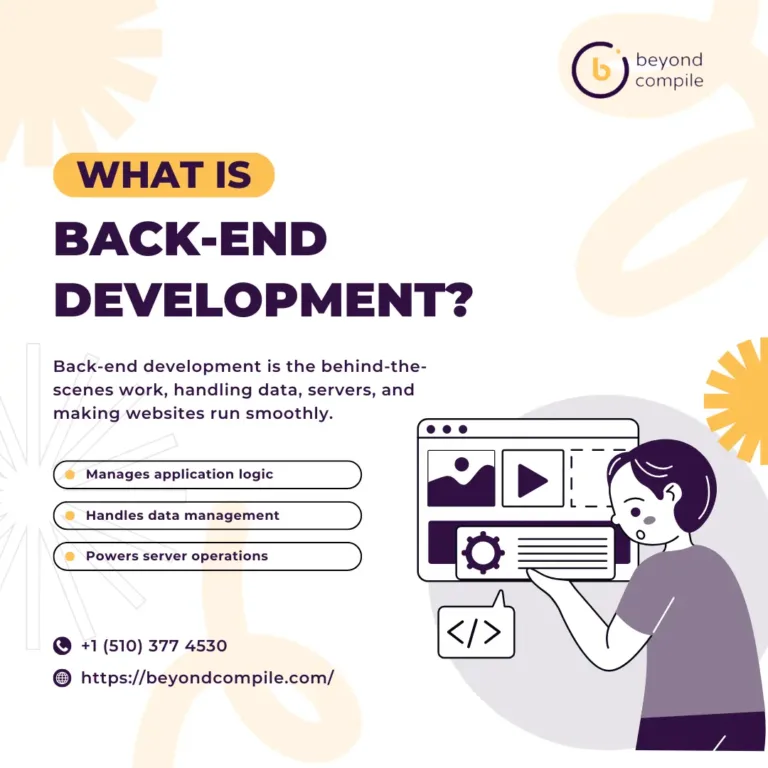

React.js has become a leading choice for developers seeking to create highly interactive, fast, and dynamic user interfaces. It offers powerful tools, a vast ecosystem, and the flexibility to build efficient frontend solutions. In this article, we’ll dive into the benefits of using React.js for frontend development, how it’s shaping the digital landscape, and essential components for developers aiming to build top-notch applications.
1. Why Choose React.js for Frontend Development?
React.js, developed by Facebook, has grown into one of the most popular JavaScript libraries due to its modular design and powerful capabilities. Here’s why React.js stands out:
- Component-Based Architecture: React organizes code into reusable components, enabling easier development, testing, and maintenance of applications.
- Virtual DOM: With React’s Virtual DOM, updates are efficient, and only the changed parts of the UI are re-rendered, leading to faster page loads and smoother interactions.
- One-Way Data Binding: React’s unidirectional data flow makes it easier to track changes, helping developers manage data state more predictably.
- Rich Ecosystem and Community: From libraries and tools to plugins and community support, React’s ecosystem provides ample resources for rapid development and troubleshooting.
2. Key Concepts in React.js
Understanding some of React’s essential concepts helps unlock its full potential:
- JSX (JavaScript XML): JSX allows developers to write HTML-like syntax within JavaScript, creating a clean, readable, and efficient way to define UI structures.
- Components: React applications are made up of components, which are modular, reusable pieces of code. Components can be classified into two types:
- Functional Components: Simplified components that rely on functions for rendering.
- Class Components: Older, stateful components that use classes to manage more complex stateful logic.
- Props and State:
- Props: Short for “properties,” props allow data to be passed from one component to another.
- State: State is a feature of React that allows components to store and manage data internally, updating UI elements dynamically.
- Hooks: Introduced in React 16.8, hooks like
useStateanduseEffectprovide functional components with access to state and lifecycle features, making development cleaner and more intuitive.
3. Advantages of Using React for Web Development
- Efficient Development Process: React’s reusable components reduce redundancy, allowing developers to build, test, and update applications quickly.
- Enhanced Performance: The Virtual DOM optimizes updates, enabling faster page loads, even in complex applications.
- Flexibility and Scalability: React’s component-based structure makes it ideal for projects of any size, from single-page apps to complex multi-page applications.
- SEO Friendliness: Unlike many JavaScript frameworks, React can render on the server side, enhancing search engine indexing.
- Strong Community and Ecosystem: With a vast library of extensions, React developers have access to a broad array of tools that enhance productivity.
4. Creating Dynamic UIs with React
React is renowned for its ability to build responsive, interactive UIs. Here’s a quick rundown of how to harness React’s power:
- Handling Forms: React provides an effective way to manage form inputs and validations with controlled components, making it easier to update state in real-time.
- API Integration: React works seamlessly with RESTful APIs and GraphQL, allowing developers to fetch, update, and display data efficiently.
- Animations: With libraries like React Spring and Framer Motion, developers can add fluid animations that enhance user experience without impacting performance.
5. Getting Started with React
Starting with React is straightforward, thanks to Create React App (CRA), which provides a ready-to-use template. Here’s a quick outline of setting up a React project:
- Install Node.js and NPM: Node.js provides the runtime, while NPM manages dependencies.
- Initialize a New Project: Run
npx create-react-app project-nameto start a new project. - Start Coding: Dive into the
srcfolder and begin writing your React components.
For production-ready applications, you can explore advanced setups using tools like Next.js or server-side rendering.
Final Thoughts
React.js has revolutionized frontend development, enabling developers to build applications that are both dynamic and efficient. Its component-based architecture, combined with robust features like hooks and Virtual DOM, allows for faster, modular development. Whether you’re building a simple website or a complex web application, React.js offers the tools and flexibility to deliver powerful user experiences.



